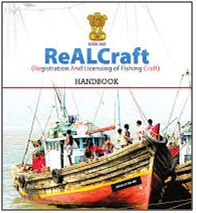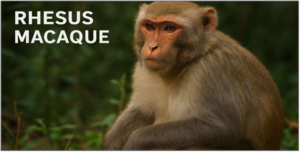Archives
(PRELIMS Focus)
Category: Defence and Security
Context:
- The participation of INS Sahyadri in Exercise Malabar-2025 reaffirms India’s enduring partnership and its commitment to strengthening coordination, enhancing interoperability, and demonstrating a collective resolve to safeguard regional security.

About Exercise Malabar:
- Origin: It started as an annual bilateral naval drill between India and the US in 1992.
- Expansion of membership: Japan joined in 2015, and Australia participated in Malabar 2020, making it a four-nation exercise under the Quad framework.
- Location: It takes place annually in the Indian Ocean and Pacific Oceans alternatively.
- Evolution: It has evolved into a key multilateral event aimed at enhancing interoperability, fostering mutual understanding, and addressing shared maritime challenges in the Indian Ocean and Indo-Pacific region.
- Objective: It aims to improve interoperability, coordination, and communication, focusing on joint fleet operations, anti-submarine warfare, gunnery drills, and airborne maritime missions.
- Focus areas: It highlights the convergence of views among the participating countries on maritime issues and their shared commitment to an open, inclusive Indo-Pacific and a rules-based international order.
- Strategic Significance: It strengthens Quad military interoperability, coordinated maritime operations, and freedom of navigation.
- 2 phases of Exercise Malabar 2025:
- Harbour Phase: It will feature operational planning and discussions, alignment on communication protocols, familiarisation visits between participating nations, and sports fixtures.
- Sea Phase: Following the harbour phase, all participating units will proceed in this phase, wherein ships and aircraft will take part in naval drills, focusing on joint fleet operations, anti-submarine warfare, gunnery serials and flying operations.
Source:
Category: Science and Technology
Context:
- The Gujarat Anti-Terrorist Squad has busted a suspected terror syndicate by arresting a ‘doctor’ with a Chinese MBBS degree, who was allegedly preparing highly-lethal chemical poison, ‘Ricin’, and whose handler is associated with the Islamic State.

About Ricin:
- Source: Ricin is a poison found naturally in castor beans. If castor beans are chewed and swallowed, the ricin that comes out can cause injury. Ricin can also be made from the waste material left over from processing castor beans.
- Forms: Ricin can be in the form of a powder, a mist, or a pellet. It can also be dissolved in water or weak acid.
- Nature: It is stable under normal conditions. However, it will not work if temperatures are over 80 degrees centigrade (176 degrees Fahrenheit).
- Toxicity: It is toxic when inhaled, ingested, or injected. As few as five to ten micrograms per kilogram can be lethal.
- Mechanism: Ricin works by getting inside the cells of a person’s body and preventing the cells from making the proteins they need. Without the proteins, cells die. Eventually this is harmful to the whole body, and death may occur.
- Potential of a biological weapon: It is of special concern because of its potential use as a biological weapon. Accidental exposure to ricin is rare and results primarily from the ingestion of castor seeds.
- Treatment: Presently, no antidote exists for ricin. Symptomatic ricin poisoning is treated by providing supportive medical care to minimize the effects of the poisoning.
Source:
Category: History and Culture
Context:
- A portion of the holy Piprahwa relics of Lord Buddha, brought from India, were enshrined at Thimpu’s prominent monastery, Tashichhodzong, considered the seat of Bhutan’s highest spiritual and political institutions.

About Piprahwa Relics:
- Location: The Piprahwa Relics are a collection of sacred artifacts discovered in 1898 at the Piprahwa Stupa in Uttar Pradesh, India. It is the site believed to be associated with ancient Kapilavastu, the homeland of Gautama Buddha.
- Significance: These relics, unearthed by British colonial engineer William Claxton Peppe in 1898, include bone fragments believed to be those of Lord Buddha, along with crystal caskets, gold ornaments, gemstones, and a sandstone coffer.
- Archaeological evidence: An inscription in Brahmi script on one of the caskets links the relics directly to the Sakya clan, to which Buddha belonged, indicating that these remains were enshrined by his followers around the third century BC.
- Classification: Piprahwa Relics are classified as ‘AA’ antiquities under Indian law, prohibiting their removal or sale.
- Discovery: The British crown claimed Peppe’s find under the 1878 Indian Treasure Trove Act, with the bones and ash presented to the Buddhist monarch King Chulalongkorn of Siam. Most of the 1,800 gems went to what is now the Indian Museum in Kolkata, while Peppe was permitted to retain approximately a fifth of them.
- Repatriation to India: A part of the Piprahwa Relics was passed down for generations in the Peppe family. These were put up for auction in Hong Kong in May 2025. However, it was successfully repatriated back to India through a public-private collaboration between the Government and the Godrej Industries Group.
Source:
Category: Government Schemes
Context:
- In a major step towards realizing the vision of a prosperous and inclusive Blue Economy, the Government of India has introduced the ReALCRaft Portal for the registration and licensing of fishing vessels and related processes.

About ReALCRaft Portal:
- Nature: The Registration And Licensing of Fishing Craft (ReALCRaft) portal is developed as a national online platform under open-source technology.
- Development: It is developed by the Department of Fisheries, Ministry of Fisheries, Animal Husbandry & Dairying.
- Objective: It aims to develop a modern, comprehensive and transparent vessel data management system in the country with the aim to enhance security features and to bring efficiency, transparency, accountability and reliability in services.
- Focus areas: It focuses on providing web-based, citizen-centric services to marine fishers and coastal States/UTs for the registration and licensing of fishing vessels, transfer of ownership, and related processes.
- Does away the requirement to visit any government office: The system is designed to be fully digital, transparent, and time-bound, allowing applicants to submit minimal documentation, track the status of their application in real time, and complete the process without visiting any government office.
- Strengthens coastal security: Fishermen and their vessels are identified using QR-coded Aadhaar Cards or Fisher ID Cards, ensuring proper verification and monitoring at sea. These digital features help marine enforcement agencies, including the Indian Coast Guard and Indian Navy, in strengthening coastal security and surveillance in the India’s Exclusive Economic Zone (EEZ).
- Associated platforms: The portal is integrated with the Marine Products Export Development Authority (MPEDA) and the Export Inspection Council (EIC) to facilitate the issuance of Fish Catch and Health Certificates.
- Provision of a free digital access pass: Under the Sustainable Harnessing of Fisheries in the EEZ Rules, 2025, all mechanized and large motorized fishing vessels are required to obtain a free digital Access Pass through the ReALCRaft Portal for operations in India’s EEZ.
Source:
Category: Environment and Ecology
Context:
- The standing committee of the National Board for Wildlife (SC-NBWL) has recommended reinstating Rhesus Macaque species of monkeys under Schedule II of the Wildlife (Protection) Act, 1972.

About Rhesus Macaque:
- Scientific name: The Rhesus macaque (Macaca mulatta) is a species of Old World monkey.
- Physical features: Rhesus macaques are familiar brown primates with red faces and rears. They have close-cropped hair on their heads, which accentuates their very expressive faces.
- Distribution: They are native to India, Bangladesh, Pakistan, Nepal, Myanmar, Thailand, Afghanistan, Vietnam, southern China, and some neighbouring areas.
- Habitat: They may be found in forests, mangroves, scrub, grasslands, and mountainous regions. They also adapt well to human presence and form larger troops in human-dominated landscapes than in forests.
- Food pattern: Rhesus macaques are omnivorous animals, eating seeds, roots, bark, fruits, and cereals.
- Uniqueness: These are social, diurnal, and both terrestrial and arboreal animals. They live in large groups, often led by a dominant male. They use vocalizations, facial expressions, and body language for communication.
- Conservation Status: It is classified as Least Concern in the IUCN Red data list.
Source:
(MAINS Focus)
(GS Paper II – India and its Neighbourhood Relations)
Context (Introduction)
India–Bhutan relations stand as a rare example of stability and mutual trust in South Asia. Prime Minister Narendra Modi’s 2025 visit to Bhutan reaffirms the deep political, cultural, and strategic partnership that continues to thrive despite vast asymmetry in size and power.
- In a region often marked by volatility and mistrust, this bilateral relationship demonstrates how restraint, respect, and shared prosperity can sustain peace in a challenging neighbourhood.
Main Arguments
- Historical Foundations
- The 1949 Treaty of Friendship formalised relations, where Bhutan agreed to be “guided by India” in external affairs while India assured non-interference in internal matters.
- This arrangement, inherited from the colonial protectorate framework, evolved uniquely due to mutual maturity and strategic foresight.
- India supported Bhutan’s early institution-building, administrative training, and defence organisation, ensuring stability and trust.
- Hydropower and infrastructure cooperation since the 1960s became symbols of partnership-driven development.
- Modernisation and Treaty Revision (2007)
- Changing global and regional conditions, Bhutan’s democratic transition, and its expanding global engagement demanded a modern framework.
- The 2007 revised treaty replaced the “guided by India” clause with “mutual respect for each other’s independence, sovereignty, and territorial integrity.”
- This marked Bhutan’s transition from dependency to partnership, reflecting Delhi’s strategic confidence and Thimphu’s political prudence.
- Both nations agreed not to allow their territories to be used against each other, strengthening regional security trust.
- Political and Democratic Maturity
- King Jigme Singye Wangchuck (K-4) oversaw Bhutan’s peaceful transition from monarchy to constitutional democracy in 2006.
- India’s support during this democratic shift highlighted its respect for Bhutan’s internal evolution.
- The current monarch, King Jigme Khesar Namgyel Wangchuck (K-5), continues to uphold this equilibrium of tradition and democracy.
- India–Bhutan coordination remains robust through periodic high-level visits, development assistance, and people-to-people ties.
- Economic and Developmental Partnership
- Hydropower Cooperation: The foundation of the relationship—Bhutan’s hydropower exports provide 40% of its revenue and meet India’s energy needs.
- Diversification Efforts: New initiatives include joint ventures in digital economy, tourism, skill development, and green infrastructure.
- Institutional Support: India provides financial aid through the Five-Year Plan framework, with the 13th Plan emphasising sustainable and inclusive growth.
- Private and Tech Collaboration: Indian firms and digital projects are fostering deeper economic integration.
- Geostrategic and Security Dimensions
- Bhutan’s geographic position between India and China makes it strategically vital.
- The Doklam plateau standoff (2017) underscored shared security interests and coordination in border management.
- Bhutan’s cautious diplomacy seeks peaceful resolution with China without compromising its sovereignty or India’s core security interests.
- Regional cooperation under initiatives like BIMSTEC and BBIN further align Thimphu with India’s Neighbourhood First and Act East policies.
- Cultural and Civilisational Linkages
- Shared Buddhist heritage, linguistic ties, and spiritual values form the emotional foundation of relations.
- The 2025 exposition of Buddha relics from Piprahwa in Bhutan reaffirmed ancient civilisational bonds.
- Educational exchanges, cultural festivals, and tourism add depth to people-to-people connections.
- Lessons for Regional Diplomacy
- India–Bhutan relations show how asymmetric partnerships can be balanced through trust and transparency.
- The “Bhutan model” emphasises sovereign equality, local participation, and patient diplomacy—valuable for India’s wider neighbourhood policy.
- It demonstrates that long-term engagement, not transactional politics, ensures regional stability.
Criticisms and Challenges
- Economic Dependence: Bhutan’s overreliance on hydropower and aid from India may limit diversification and economic resilience.
- Environmental Concerns: Large hydropower projects risk ecological degradation and displacement in Bhutan’s fragile Himalayan ecosystem.
- China Factor: Bhutan’s boundary talks with China could affect India’s strategic calculations if not handled sensitively.
- Public Perception: The perception of India’s “big brother” approach in the region must be avoided through constant dialogue and equality-based engagement.
- Youth Aspirations and Migration: Rising expectations for jobs and education require collaborative human capital investments beyond traditional aid.
Reforms and Policy Measures
- Economic Diversification: Promote cooperation in sectors such as IT, digital trade, organic farming, and renewable energy beyond hydropower.
- Connectivity and Infrastructure: Develop cross-border railway and road projects like Kokrajhar–Gelephu to integrate Bhutan into regional value chains.
- Environmental Partnership: Launch joint Himalayan sustainability missions focusing on hydropower efficiency, climate adaptation, and biodiversity conservation.
- Institutional Coordination: Establish an India–Bhutan Development and Security Council for continuous policy dialogue and implementation.
- Cultural and Educational Diplomacy: Expand scholarships, joint research, and Buddhist tourism circuits to strengthen soft power and mutual understanding.
- Strategic Dialogue: Continue defence and border cooperation through annual security consultations to ensure preparedness amid regional uncertainties.
Conclusion
India–Bhutan relations exemplify the essence of trust-based regionalism in South Asia. Their steady evolution from a protectorate framework to an equal partnership underscores the importance of mutual respect, democratic adaptation, and shared development.
- As China’s presence grows in the Himalayas, India’s approach in Bhutan—marked by restraint, cooperation, and civilisational depth—offers a replicable model for engaging other neighbours.
- The future of India’s “Neighbourhood First” policy lies in sustaining such balanced partnerships that combine strategic prudence with human-centric diplomacy.
Mains Question
“India–Bhutan relations demonstrate that power asymmetry in South Asia need not lead to friction but can evolve into a model of mutual respect, shared prosperity, and strategic balance.” Examine in the context of India’s neighbourhood diplomacy. (250 words, 15 marks)
Source: The Indian Express
(GS Paper IV – Ethics, Human Values and International Relations)
Context (Introduction)
The ongoing humanitarian crisis in Sudan—marked by ethnic violence, displacement, and mass killings—has received little global attention compared to conflicts like Gaza or Ukraine. This differential response raises ethical questions about moral responsibility, empathy, and justice in international affairs. The silence of the world community exposes deeper issues of racialised compassion and selective moral engagement in global politics.
Main Ethical Arguments
- Ethics of Universal Humanism:
- Every human being possesses equal moral worth, irrespective of geography, race, or culture.
- The global neglect of Sudan violates this Kantian principle of universality, which demands that moral concern be extended to all.
- The “hierarchy of suffering” reflects moral inconsistency—where empathy is extended based on proximity, media visibility, or racial affinity.
- Racialised Empathy and Civilisational Bias:
- The article highlights how conflicts in sub-Saharan Africa evoke limited outrage compared to those in Western or Middle Eastern regions.
- Ethical relativism—consciously or subconsciously—creates a divide between the “global North’s” suffering and that of the “global South.”
- Such bias undermines the principle of justice as fairness (John Rawls), reducing moral responses to selective compassion.
- Moral Responsibility of Global Actors:
- Governments, corporations, and civil society share a duty of care toward global humanitarian crises.
- The Rapid Support Forces (RSF), backed by foreign funding (notably the UAE), show how external actors profit from conflict while escaping accountability.
- The silence of influential nations, institutions, and even global sporting entities (e.g., football clubs with UAE ownership) reflects ethical complicity through inaction.
- Media and Moral Imagination:
- The media shapes moral perception by determining which crises are visible.
- Ethical journalism requires impartiality in reporting human suffering.
- The limited coverage of Sudan reveals a media failure to uphold the virtue of truthfulness and duty of global solidarity.
- Ethics of Collective Action and Mobilisation:
- Public outrage can pressure institutions to act, as seen in global movements for Palestine or Ukraine.
- Sudan’s lack of mobilisation shows how moral energy is unevenly distributed across causes.
- The ethics of empathy demands that civil society and diaspora networks extend solidarity beyond culturally familiar or politically popular causes.
Criticisms and Ethical Dilemmas
- Moral Fatigue: Constant exposure to global suffering may desensitise people, leading to selective emotional engagement.
- Pragmatic Politics: Nations often weigh strategic or economic interests over ethical imperatives, resulting in inaction.
- Cultural Distance: Societies may subconsciously empathise more with those perceived as “similar,” reflecting deep-seated ethnocentrism.
- Media Economics: Coverage decisions are influenced by audience interest and commercial viability, rather than moral gravity.
- Moral Hypocrisy: Public figures and global institutions often express values of equality and justice but act inconsistently across regions.
Reforms and Ethical Correctives
- Global Ethical Education: Promote universal ethics and compassion through educational curricula and public discourse to dismantle racial and cultural biases.
- Ethical Journalism Charter: Encourage international media houses to commit to equal coverage of humanitarian crises based on severity, not geography.
- Corporate Social Responsibility (CSR): Companies, especially those linked to conflict-funding networks, must adopt human rights due diligence and transparency.
- International Institutional Accountability: Strengthen the UN Human Rights Council’s mechanisms for monitoring atrocities, ensuring equal treatment of all regions.
- Global Civil Society Mobilisation: NGOs, social media platforms, and academic institutions should foster transnational solidarity campaigns for neglected crises like Sudan.
Conclusion
The Sudan crisis is not only a political tragedy—it is a moral test for humanity. The silence surrounding it reflects the racialisation of empathy and the erosion of universal moral concern. Ethical global citizenship demands that compassion not be selective, and that justice be as inclusive as suffering itself. As philosopher Albert Schweitzer observed, “Ethics is nothing else than reverence for life.” The world must rediscover this reverence—beyond race, borders, and profit—to ensure that every human life commands equal moral urgency.
Mains Question:
- “The global silence on Sudan reflects not just political neglect but an ethical failure of universal empathy.” Discuss with reference to the principles of global justice and moral responsibility.(150 words, 10 marks)
Source: The Indian Express
